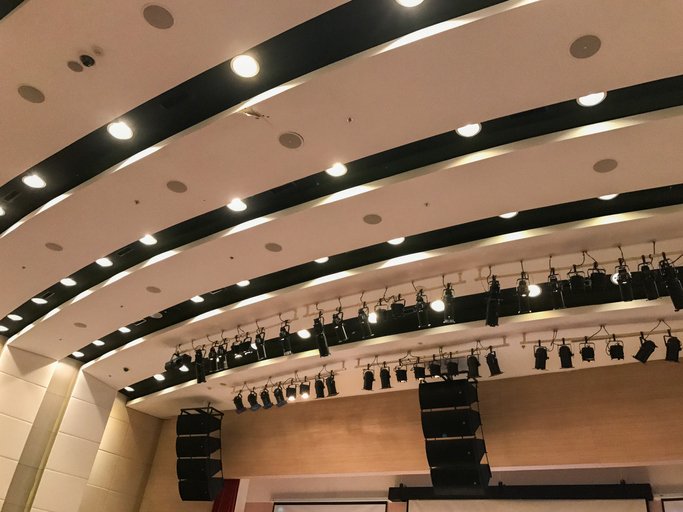A distributed sound system and a live sound system are two different approaches to audio reinforcement, designed for different purposes and environments.
Purpose and Environment
- Distributed Sound System: A distributed sound system is typically used in commercial or public spaces such as airports, shopping malls, offices, hotels, or restaurants. The primary goal is to evenly distribute sound throughout the entire area, providing background music or making announcements.
- Live Sound System: A live sound system is employed in venues where live performances take place, such as concerts, festivals, theaters, or clubs. It aims to deliver high-quality, immersive sound to the audience, enhancing the live experience.
Sound Reinforcement Approach
- Distributed Sound System: In a distributed sound system, multiple speakers are installed throughout the space, strategically placed to provide consistent audio coverage. These systems often employ smaller speakers that are evenly distributed to ensure uniform sound levels and intelligibility across the entire area.
- Live Sound System: A live sound system focuses on providing high sound pressure levels and optimal audio quality for the audience. It typically employs larger speakers, subwoofers, and other professional audio equipment to deliver powerful, dynamic sound that can fill larger venues and cater to the specific needs of live performances.
Sound Design and Control
- Distributed Sound System: Distributed sound systems are designed to provide a seamless listening experience throughout the entire space. They are often centrally controlled, allowing for volume adjustments, equalization, and zoning to cater to different areas within the facility.
- Live Sound System: Live sound systems require a more complex setup, with dedicated front-of-house (FOH) and monitor mixing consoles. Sound engineers use these consoles to balance the different audio sources, adjust levels, apply effects, and create an optimal mix for the live performance. They work in real-time to ensure the best sound quality and address any specific requirements of the performers.
Equipment and Scalability
- Distributed Sound System: Distributed sound systems typically use smaller, compact speakers that can blend seamlessly with the architecture and aesthetics of the space. These systems are often scalable, allowing for easy expansion or modification to accommodate changing needs.
- Live Sound System: Live sound systems require specialized professional audio equipment such as large-format speakers, subwoofers, amplifiers, mixing consoles, and a range of microphones. They are designed to handle higher power levels and offer more advanced features to meet the demands of live performances.
While there can be some overlap in terms of equipment and applications, the fundamental differences between distributed sound systems and live sound systems lie in their purpose, approach to sound reinforcement, design philosophy, and the specific environments they cater to.







